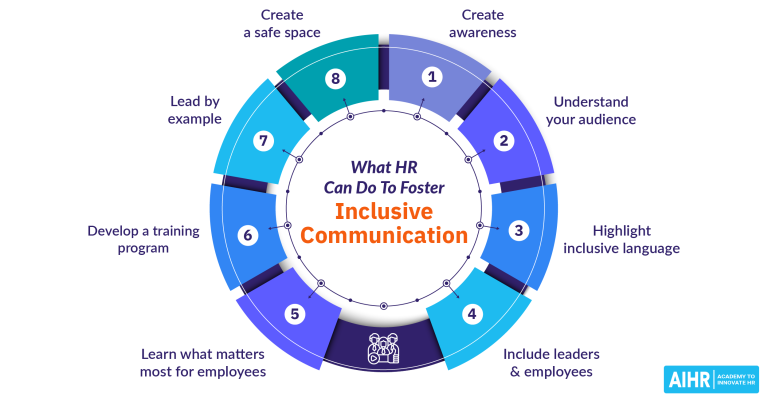Why And How to Bring Statistics Into Speeches?
Bringing statistics into your speech is crucial to support your claims and present evidence-based information. It adds credibility and persuasiveness to your arguments.
Moreover, statistics provide concrete data that can be easily understood by your audience, making your speech more impactful and memorable. Integrating statistics into your speech is a powerful way to engage and convince your listeners, enabling them to see the relevance and significance of your message.
By utilizing statistics effectively, you can enhance your speech’s impact and leave a lasting impression on your audience. So, why not leverage the power of statistics to deliver a compelling and persuasive speech?

Credit: putyourselfacross.co.uk
Enhancing Credibility And Persuasiveness
Boost the credibility and persuasiveness of your speech by incorporating compelling statistics. Captivate your audience with data-driven insights, strengthening your arguments and showcasing expertise. Skyrocket your impact and leave a lasting impression with these powerful tools.
Incorporating statistics into your speech can significantly enhance your credibility and persuasiveness as a speaker. By utilizing data in your presentations, you provide your audience with evidence-based information that adds weight to your arguments and positions. This section explores the importance of incorporating statistics into speeches and how it can help build trust and credibility with your audience.
Importance Of Incorporating Statistics Into Speeches:
- Statistics provide credibility: Presenting facts and figures in your speech helps establish your expertise and credibility on the topic. Statistics demonstrate that you have conducted thorough research and are well-informed on the subject matter.
- Data-driven decision making: Using statistics in your speech allows you to make logical and informed arguments. Data provides a solid foundation for your claims, helping you persuade your audience to see things from your perspective.
- Engages the audience: People are naturally drawn to concrete, quantifiable information. Statistics can captivate your audience’s attention and keep them engaged throughout your speech. Incorporating relevant and impactful statistics brings your message to life and creates a memorable experience for your listeners.
- Adds authority and professionalism: By incorporating statistics into your speech, you position yourself as an authoritative figure on the topic. This can boost your professional image and establish you as a credible source of information.
- Provides a different perspective: Statistics can offer a fresh perspective or shed light on an issue that may be overlooked. They provide a comprehensive view of a situation, enabling you to present a well-rounded argument.
- Creates emotional appeal: Statistics can evoke emotions and connect with your audience on a deeper level. For example, sharing statistics about the impact of a particular issue can invoke empathy and inspire action.
Incorporating statistics into your speeches not only enhances your credibility but also makes your arguments more persuasive and impactful. By using data-driven evidence, you can effectively engage your audience, establish authority, and appeal to their emotions. So, next time you prepare a speech, ensure that you bring statistics to the forefront and take advantage of their power in communicating your message effectively.
Making Your Points More Persuasive
Enhance the power of your persuasive speech by incorporating statistics. Adding factual data strengthens your arguments and makes them more compelling, leaving a lasting impact on your audience. Discover why and how to use statistics effectively in your presentations for maximum influence.
How Statistics Can Strengthen Your Arguments:
- Statistics can add credibility to your statements and make your points more persuasive. When you back up your claims with data, it shows that you have done your research and have evidence to support your arguments.
- Including statistics in your speech helps capture your audience’s attention and keeps them engaged. People are naturally drawn to numbers and figures, and they can help illustrate the importance or magnitude of your message.
- Statistics can also help simplify complex concepts or ideas. Often, data can present information in a more accessible way, making it easier for your audience to understand your key points.
- By incorporating statistics, you can appeal to your audience’s logic and rational thinking. Data-driven arguments are more likely to be convincing, as they provide concrete evidence and logical reasoning.
- Utilizing statistics can also enhance your credibility as a speaker. When you present facts and figures, it demonstrates your expertise and knowledge on the topic, making your audience more likely to trust and accept your message.
Using Data To Support Your Claims And Persuade The Audience:
- Start by identifying your key arguments or claims. What are the main points you want to convey to your audience? Ensure that your claims are clear and specific.
- Once you have established your arguments, research relevant statistical data that aligns with your points. Look for reputable sources such as studies, surveys, or official reports.
- Choose data that is current and up-to-date, as this provides more credibility to your speech. Outdated statistics may undermine your arguments.
- When incorporating statistics, remember to provide context and explain the significance of the data. This will help your audience understand why the numbers are relevant and how they support your claims.
- Use visual aids such as charts, graphs, or infographics to present the statistics visually. Visual representations can make the data more digestible and memorable for your audience.
- Be mindful of how you present the data. Avoid overwhelming your audience with too many numbers or complex figures. Use concise and straightforward language to explain the statistics clearly.
- Whenever possible, use comparative statistics to make your arguments stronger. Comparing data from different sources or time periods can highlight trends, patterns, or differences that reinforce your points.
- Remember that statistics should complement your speech rather than overshadow it. Use data strategically to enhance your arguments, but ensure that you maintain a balance between statistics and other persuasive techniques such as storytelling or personal anecdotes.
- Practice your speech to ensure that you can effectively integrate statistics into your delivery. Familiarize yourself with the data, so you can confidently present it to your audience and answer any questions that may arise.
- Ultimately, the goal of using statistics is to provide evidence that supports your claims and persuades your audience. By leveraging data in your speech, you can make your arguments more compelling and increase your chances of influencing your listeners.
Identifying Relevant Data And Sources
When preparing a speech, it is essential to incorporate relevant data and sources to support your points. By utilizing statistics, you can effectively strengthen your arguments and provide credible information to your audience. This article will guide you on why and how to bring statistics into your speech, enhancing your persuasive abilities.
Finding reliable and up-to-date statistics:
- Conduct thorough research to find credible sources of statistical data. Utilize reputable websites, academic journals, or government databases for accurate information.
- Ensure that the statistics you gather are the most current and up-to-date. Look for recent studies or reports that provide the most relevant data.
- Verify the credibility and reputation of your sources. Consider using data from well-known institutions or organizations that specialize in the field relevant to your speech topic.
Choosing data that aligns with your speech topic and audience:
- Clearly define your speech topic and the key points you want to emphasize. This will help you identify the specific data and statistics that support your main arguments.
- Consider the audience you will be speaking to. Tailor your statistics to align with their interests, knowledge level, and demographics.
- The data you choose should directly relate to your speech topic and reinforce the main message you want to convey.
- Select statistics that are easily understandable and resonate with your audience. Avoid using complex data that may confuse or overwhelm them.
By following these guidelines for finding reliable and relevant statistics, you can enhance the credibility and impact of your speech. Remember to cite your sources appropriately and present the data in a clear and concise manner. The right statistics can effectively support your arguments, engage your audience, and make your speech more persuasive and compelling.
Analyzing And Interpreting Data
Bring statistics into your speech by analyzing and interpreting data. Gain credibility by presenting evidence and supporting your claims with factual information. Use statistical insights to engage your audience and make your speech more persuasive.
Understanding Statistical Concepts And Methods
Statistics is a powerful tool that can help us make sense of vast amounts of data. By understanding various statistical concepts and methods, you can effectively analyze data and uncover valuable insights. Here are some key points to keep in mind:
- Statistical concepts:
- Population vs. Sample: A population refers to the entire group you want to study, while a sample is a subset of that population that you actually analyze.
- Descriptive vs. inferential statistics: Descriptive statistics summarize and describe data, while inferential statistics make inferences and predictions based on sample data.
- Variables: Variables are attributes or characteristics that can take different values, such as age, gender, or income. They play a crucial role in statistical analysis.
- Statistical methods:
- Data collection: Understanding the methods used to collect data is important to ensure its accuracy and reliability. Common methods include surveys, experiments, and observational studies.
- Data analysis: Statistical methods such as hypothesis testing, regression analysis, and data visualization allow you to analyze data and identify patterns or relationships.
- Probability: The concept of probability helps us assess the likelihood of certain events occurring, enabling us to make informed decisions based on uncertain outcomes.
Interpreting Data To Extract Meaningful Insights
Once you have gathered and analyzed data using statistical methods, the next step is to interpret the findings to extract meaningful insights. Here’s how you can effectively interpret data:
- Identify patterns: Look for patterns or trends in the data. Are there any noticeable correlations between variables? Do certain characteristics consistently appear together?
- Draw conclusions: Based on the data analysis, draw conclusions that are supported by evidence. Don’t make assumptions without proper statistical backing.
- Contextualize the results: Understand the context in which the data was collected and its limitations. Consider factors that may have influenced the outcomes and be cautious of drawing overly generalized conclusions.
- Communicate clearly: When presenting your data and insights, ensure that you communicate the findings in a clear and concise manner. Use visualizations, such as charts or graphs, to enhance understanding.
- Apply insights: Once you have extracted meaningful insights from the data, apply them to inform decision-making, identify areas for improvement, or explore new opportunities.
Remember, data analysis is just one part of the process. Accurate interpretation of the data is equally important to gain valuable insights and make informed decisions.
Presenting Statistics Effectively In Your Speech
Discover the power of incorporating statistics into your speech to captivate your audience. Gain insights on why and how to effectively present statistics in a way that engages and persuades, leaving a lasting impact.
In today’s data-driven world, incorporating statistics into your speech can make a significant impact on your audience. However, simply reciting numbers and figures can quickly become monotonous and difficult to comprehend. To ensure that your statistics are delivered effectively, here are some key strategies to consider:
Organizing Data In A Logical And Comprehensible Manner:
- Categorize your data: Group related statistics under clear headings or categories to provide a sense of structure and coherence.
- Use subheadings: Break down complex data into smaller sections to make it easier for your audience to digest and remember.
- Arrange in a logical progression: Present your statistics in a sequence that makes sense and leads your audience from one point to another, building a cohesive narrative.
Utilizing Visuals, Such As Charts And Graphs, To Enhance Understanding:
- Create visual representations: Convert your statistics into charts, graphs, or infographics to make them visually appealing and easier to interpret.
- Choose appropriate visuals: Select the most suitable type of visual representation based on the data you are presenting. For instance, bar charts for comparisons, line graphs for trends, and pie charts for percentages.
- Keep visuals simple: Avoid cluttering your visuals with excessive data or unnecessary design elements. Opt for clean and straightforward visuals that highlight the key takeaway points.
Summarizing Complex Data Into Key Points:
- Focus on the main message: Identify the most critical insights or trends within your data and highlight them to ensure your audience grasps the significance.
- Provide context: Explain the relevance and implications of your statistics, connecting them to the broader topic or theme of your speech.
- Use memorable examples: Illustrate your statistics with real-world examples or anecdotes that can anchor the information in your audience’s minds.
Engaging Your Audience With Stories And Narratives:
- Weave a compelling narrative: Incorporate storytelling techniques to engage your audience emotionally and create a meaningful connection with the statistics you share.
- Relate the statistics to everyday life: Make your statistics relatable and relevant by linking them to common experiences or circumstances that your audience can easily understand.
- Personalize the data: Use individual stories or anecdotes to add a human element to your statistics, making them more memorable and impactful.
By employing these strategies, you can present statistics in a way that captivates your audience’s attention and ensures they comprehend and retain the information effectively. Remember, organizing data logically, utilizing visuals, summarizing key points, and engaging your audience through stories are all essential elements in delivering statistics effectively in your speech.
Making Statistics Accessible And Understandable
Discover the power of incorporating statistics into your speeches for compelling and persuasive communication. Learn why and how to make statistics accessible and understandable to captivate your audience and enhance your message.
When preparing a speech that includes statistical data, it is crucial to make the information easily understandable for your audience. Simplifying complex data and presenting it in a relatable context can help ensure that your message resonates and is comprehensible to a general audience.
Here are some techniques to consider:
Simplifying Complex Data For General Audience Comprehension:
- Break down complex statistics into smaller, more digestible parts: By presenting one statistic at a time and providing clear explanations, you can prevent overwhelming your audience with too much information all at once.
- Avoid jargon and technical terms: Use simple and straightforward language to explain the statistical concepts. This allows your audience to grasp the data without getting lost in unfamiliar terminology.
- Utilize visual aids: Incorporate charts, graphs, or infographics to visually represent the data. Visual aids can simplify complex information and make it easier for your audience to interpret and understand.
- Provide real-life examples: Relate the statistics to real-world scenarios or experiences that your audience can identify with. This helps them connect to the data and see its relevance in their own lives.
Presenting Statistics In A Relatable Context For Better Understanding:
- Tell stories or anecdotes: Weaving stories into your speech that highlight the significance or impact of the statistics can engage your audience’s emotions and help them relate to the data on a personal level.
- Use analogies or metaphors: Comparing the statistics to everyday objects or experiences can make them more relatable. Analogies and metaphors can simplify complex concepts and help your audience visualize the meaning behind the statistics.
- Provide context and relevance: Explain why the statistics are important and how they relate to the topic or issue you are discussing. By highlighting the relevance of the data, you can enhance your audience’s understanding of its significance.
- Encourage audience participation: Engage your audience by asking questions or involving them in activities related to the statistics. This interactive approach can promote better comprehension and retention of the information.
Remember, your goal is to make the statistics accessible and understandable to a general audience. By simplifying complex data and presenting it in a relatable context, you can ensure that your speech resonates with your audience and effectively conveys your message.
Using Storytelling Techniques To Bring Statistics To Life
Discover the power of storytelling techniques to make statistics come alive in your speech. Learn why and how to incorporate statistics to captivate your audience and keep them engaged throughout your presentation.
Storytelling is a powerful tool that can transform dry statistics into compelling narratives. By incorporating real-life examples and anecdotes, you can make statistics more relatable and engaging for your audience. Here are some techniques to consider:
- Incorporating real-life examples: Use concrete examples that your audience can easily visualize and connect with. This helps to make the statistics more tangible and relatable. For example, if you’re discussing unemployment rates, share a personal story of someone who struggled to find a job.
- Adding anecdotes: Anecdotes are short, personal stories that help illustrate a point or bring data to life. By sharing anecdotes related to your statistics, you can create a deeper connection with your audience. For instance, if you’re talking about the impact of climate change, you could share a story about a community that was severely affected by a natural disaster.
- Creating an emotional connection: Statistics alone might not evoke much emotion, but storytelling can change that. Use narratives that evoke emotions such as empathy, compassion, or even anger to create a stronger connection with your audience. This emotional connection helps to captivate their attention and make the information more memorable.
- Empathizing with your audience: Put yourself in your audience’s shoes and consider what stories or examples would resonate with them. Craft your narratives in a way that shows you understand their experiences, challenges, or aspirations. By doing so, you can make the statistics more relevant and meaningful to their lives.
- Using descriptive language: Use vivid and descriptive language to paint a clear picture in your audience’s minds. This helps them visualize the scenarios and engage with the statistics on a deeper level. Instead of saying “10% increase in sales,” you could say “a significant surge in sales that propelled the company’s growth.”
- Framing the narrative: Structure your storytelling in a way that builds anticipation and suspense. Start with a relatable situation or problem, introduce the statistics that highlight the scale or impact of the issue, and then provide a resolution or call to action. This format helps to keep your audience engaged throughout the story.
By incorporating storytelling techniques into your speech, you can transform dry statistics into compelling narratives that captivate your audience’s attention. When you use real-life examples and anecdotes to make statistics relatable and create an emotional connection, you make the information more memorable and impactful.
So, consider weaving stories into your next presentation or speech and watch as your audience becomes more engaged and inspired.
Encouraging Audience Interaction And Involvement
Discover the power of incorporating statistics into your speech for increased audience involvement and interaction. Learn how to captivate your listeners by presenting data in a compelling and relatable manner, enhancing the impact of your message.
Incorporating interactive elements to engage the audience with the statistics:
- Use visually appealing infographics and charts to present statistics in a clear and engaging manner.
- Display real-time data on a screen or slide to captivate the audience’s attention.
- Break down complex statistics into simple, easy-to-understand pieces of information.
- Incorporate storytelling techniques to make the statistics relatable and memorable.
- Conduct live polls or quizzes to encourage audience participation and interaction.
Encouraging questions and discussions to foster involvement:
- Begin your speech by informing the audience that questions and discussions are welcomed and encouraged.
- Pause after presenting key statistics, allowing the audience time to digest the information and formulate questions.
- Clearly communicate how the statistics relate to the topic or subject matter.
- Ask thought-provoking questions to spark discussions among the audience.
- Implement interactive activities like group discussions or brainstorming sessions to encourage collaborative thinking and engagement.
Remember, incorporating interactive elements and encouraging audience interaction and involvement is crucial for delivering a dynamic and engaging speech. By presenting statistics in a visually appealing manner and actively inviting questions and discussions, you can create an interactive experience that captivates and educates your audience.
Avoiding Manipulation And Misrepresentation Of Data
Discover the importance of incorporating statistics into your speech, as it helps avoid manipulation and misrepresentation of data. By relying on factual information, you can present a more authentic and compelling argument in a concise manner.
Being Mindful Of Bias And Ensuring Accurate Representation Of Statistics
When it comes to incorporating statistics into your speech, it is crucial to be aware of bias and maintain accuracy in presenting the data. By doing so, you can avoid manipulation and misrepresentation of statistics, which can lead to misunderstandings and misinformation.
Here are some key points to keep in mind:
- Recognize potential bias: Acknowledge that statistics can sometimes be influenced by personal opinions, preconceived notions, and hidden agendas. Being aware of this bias is the first step in ensuring that you present statistics objectively.
- Verify the source: Before including any statistics in your speech, it is essential to verify the authenticity and credibility of the source. Look for reputable sources such as government reports, academic studies, and well-established organizations. This will help ensure that the data you present is reliable and unbiased.
- Use a variety of sources: Relying on a single source can limit the perspective and accuracy of the statistics you present. To provide a comprehensive view, gather data from multiple reputable sources that offer different viewpoints. This will help you present a well-rounded and unbiased representation of the topic.
- Understand the methodology: Familiarize yourself with the methodology behind the collection and analysis of the data. This will enable you to assess the reliability of the statistics and understand any potential limitations or areas of uncertainty. Providing this context in your speech can enhance the audience’s understanding and reduce the chances of misinterpretation.
- Avoid cherry-picking data: Cherry-picking refers to selectively choosing data that supports your personal agenda or beliefs while disregarding contradictory information. Instead, strive for a balanced presentation by considering the full range of available data. This will provide a more accurate representation of the topic and demonstrate your commitment to presenting information in an unbiased manner.
Remember, the goal of incorporating statistics into your speech is to inform and engage your audience. By being mindful of bias, verifying sources, using a variety of sources, understanding methodology, and avoiding cherry-picking data, you can ensure that your presentation is unbiased and credible.
Addressing Potential Criticisms And Counterarguments
To strengthen your speech and address potential criticisms, integrating statistics is crucial. By incorporating relevant data, you can provide evidence-based support for your arguments and make your speech more persuasive and credible. Statistics add substance and authenticity to your message, helping you engage your audience and effectively convey your ideas.
Anticipating And Addressing Potential Objections To Your Statistics:
Addressing potential criticisms and counterarguments is an essential aspect of incorporating statistics into your speech effectively. By acknowledging and proactively responding to potential objections, you can strengthen the credibility and persuasiveness of your data-driven arguments. Here are a few strategies to consider:
- Providing context: To preemptively address skepticism, it is crucial to provide the necessary background information and context for your statistics. This helps ensure that your audience fully understands the significance and relevance of the data you’re presenting.
- Citing reliable sources: To defend the validity of your statistics, it’s crucial to cite credible sources that have a reputation for accuracy and expertise. Be prepared to share the sources behind your data to strengthen your argument and refute doubts.
- Highlighting methodology: Explaining the methodology used to collect and analyze the statistics can help alleviate concerns about the accuracy and reliability of the data. By demonstrating well-defined research methods, you can enhance the credibility of your findings.
- Addressing potential biases: Acknowledging potential biases in your data is crucial for maintaining transparency and trust. By highlighting any limitations or biases upfront, you show that you have carefully considered the potential flaws in your statistics and are prepared to address them.
- Presenting alternative viewpoints: To demonstrate a comprehensive understanding of the topic, engage with potential counterarguments and present alternative viewpoints. This approach allows you to showcase your ability to critically analyze the data and strengthens your argument by addressing potential objections head-on.
- Offering supporting evidence: In addition to statistics, incorporating supporting evidence such as case studies, real-life examples, and expert opinions can further fortify your arguments. This helps build a compelling narrative and strengthens your overall position.
- Addressing statistical limitations: Statistics have inherent limitations, and it’s important to acknowledge and address them. This can include issues of sample size, bias, or gaps in the data. By openly discussing the limitations of your statistics, you show integrity and strengthen your argument by demonstrating a nuanced understanding of your topic.
Remember, actively addressing potential criticisms and counterarguments is an integral part of incorporating statistics into your speech. By following these strategies, you can effectively defend your data, maintain credibility, and increase the impact of your persuasive arguments.
Balancing Statistics And Emotional Appeal
Discover the power of statistics in your speech as it brings a compelling blend of logic and emotion. Learn why incorporating statistical data can engage your audience and enhance the credibility of your message. Gain confidence in using numbers effectively to make a persuasive impact.
Striking A Balance Between Statistics And Emotional Appeal In Speeches
When delivering a speech, it is essential to strike a balance between using statistical data and appealing to emotions. While statistics provide evidence and credibility to your arguments, emotional appeal helps connect with your audience on a deeper level. Here’s how you can ensure that statistics enhance rather than overshadow the emotional impact of your speech:
- Use statistics to support your main points: Incorporate relevant statistics that reinforce the key messages of your speech. This will provide factual evidence and make your arguments more persuasive.
- Contextualize the numbers: Instead of overwhelming your audience with raw data, provide context and explain the significance of the statistics. Help your listeners understand why those numbers matter and how they relate to their lives.
- Connect statistics to real-life stories: Integrate personal anecdotes or stories that illustrate the impact of the statistics on individuals or communities. This humanizes the data and helps your audience empathize with the subject matter.
- Present statistics in a visually appealing way: Utilize visual aids such as charts, graphs, or infographics to present complex data in a visually digestible format. This not only makes the information easier to comprehend but also adds visual interest to your speech.
- Appeal to emotions through storytelling: Incorporate emotional narratives or examples that engage your audience’s emotions. Personal stories or vivid descriptions can create an emotional connection and make your speech more memorable.
- Use language that evokes emotions: Be mindful of the words and phrases you use in your speech. Choose language that evokes the desired emotional response, whether it’s empathy, concern, hope, or determination.
- Maintain a balance between facts and emotions: While statistics provide credibility, it’s crucial not to overwhelm your audience with too many numbers. Make sure to intersperse emotional appeals throughout your speech to maintain a balanced and engaging presentation.
- Practice delivery to enhance emotional impact: Pay attention to your tone of voice, body language, and pacing while delivering the speech. These aspects can greatly affect the emotional impact of your words, so practice to ensure that your delivery enhances the intended emotional appeal.
- Tailor your approach to the audience: Understand your audience and adapt your use of statistics and emotional appeal accordingly. Some audiences may respond more to numbers, while others may be more receptive to emotional storytelling. Gauge the preferences of your listeners and adjust your approach accordingly.
- Seek feedback and evaluate effectiveness: After delivering your speech, solicit feedback from trusted individuals who can provide constructive criticism. Reflect on the effectiveness of your statistical and emotional appeals, and make adjustments for future speeches.
By striking a balance between statistics and emotional appeal in your speeches, you can create a persuasive and impactful presentation that resonates with your audience. Remember, statistics add credibility, while emotional appeal helps forge a strong connection with your listeners.
Practice and refine your approach to achieve the optimum balance between facts and emotions in your speeches.
Frequently Asked Questions Of Why And How To Bring Statistics Into Your Speech
Q: Why Should I Bring Statistics Into My Speech?
A: including statistics in your speech adds credibility and persuasiveness by providing evidence and supporting your arguments. Statistics also help to grab the audience’s attention, make your speech more memorable, and enhance the overall impact of your message.
Q: How Can I Incorporate Statistics Effectively In My Speech?
A: to incorporate statistics effectively, ensure that they are relevant to your topic and audience. Make the statistics easy to understand and memorable by using visual aids such as infographics or charts. Provide context and explain the significance of the statistics to help the audience connect with your message.
Q: Where Can I Find Reliable Statistics For My Speech?
A: reliable statistics can be found in reputable sources such as government websites, research journals, and industry reports. Websites like statista, pew research center, and official government census data provide reliable and up-to-date statistics. Always double-check the credibility and accuracy of the source before using any statistics in your speech.
Q: How Many Statistics Should I Include In My Speech?
A: the number of statistics you include in your speech depends on the length and topic of your speech. As a general guideline, use a few key statistics to support each main point or argument. Overloading your speech with too many statistics can overwhelm the audience or dilute the impact of your message.
Conclusion
Incorporating statistics into your speech is an essential skill for effective communication. By leveraging data and numbers, you can instantly capture your audience’s attention and establish credibility. Statistics bring a sense of objectivity and authority to your speech, making your arguments more persuasive and compelling.
Not only do they help to support your claims, but they also add depth and substance to your message. Statistics allow you to provide evidence-based insights and make your points more relatable and impactful. They help you break down complex ideas into digestible pieces of information, making it easier for your audience to grasp and retain.
Furthermore, incorporating statistics into your speech demonstrates a commitment to research and thoroughness, showcasing your expertise and professionalism. Remember to choose statistics wisely, ensuring they are accurate, up-to-date, and from reputable sources. Additionally, present the data in a clear and concise way, using visuals if possible, to enhance comprehension and engagement.
By harnessing the power of statistics, you can elevate your speech to new heights and leave a lasting impression on your audience.





